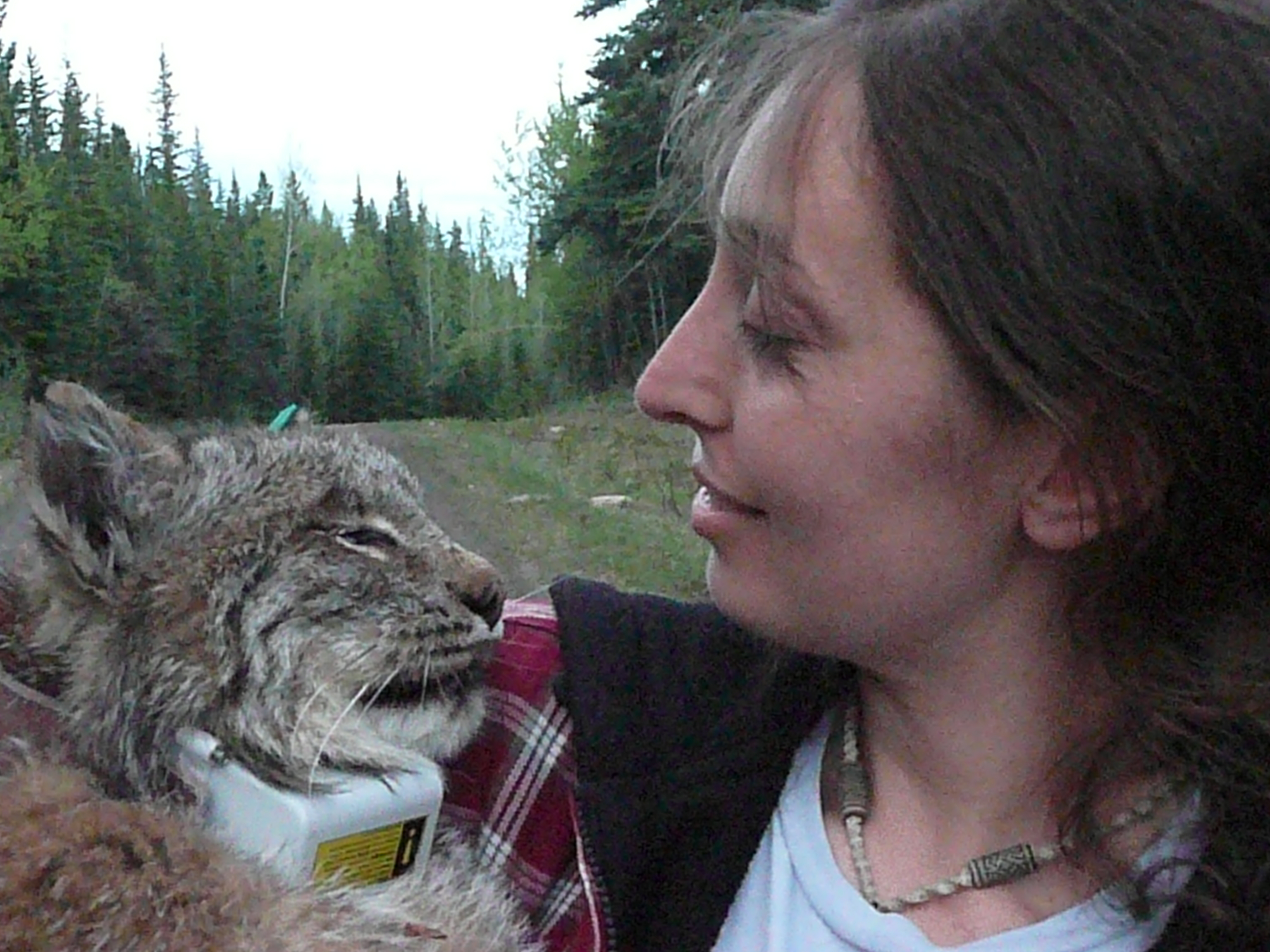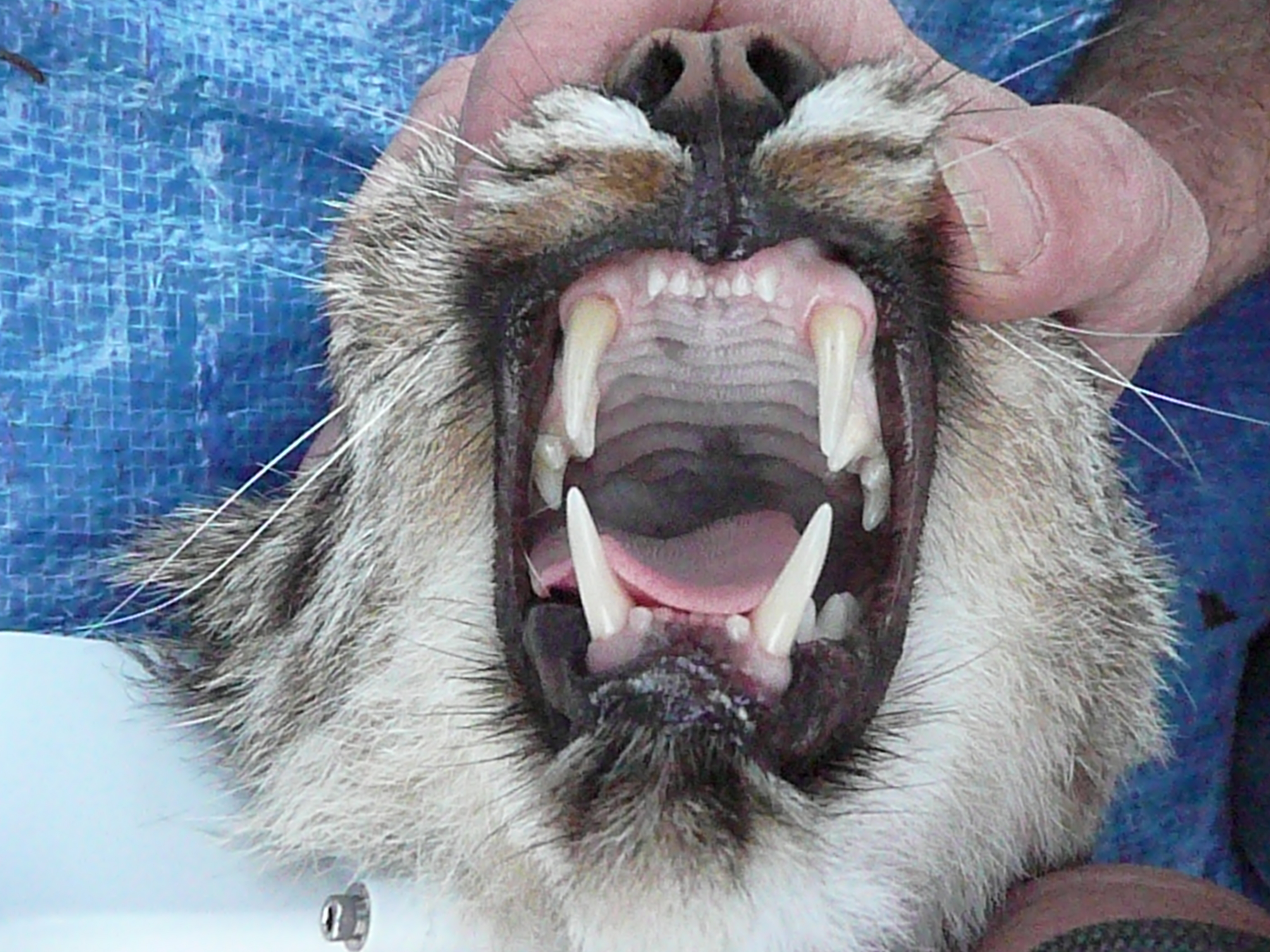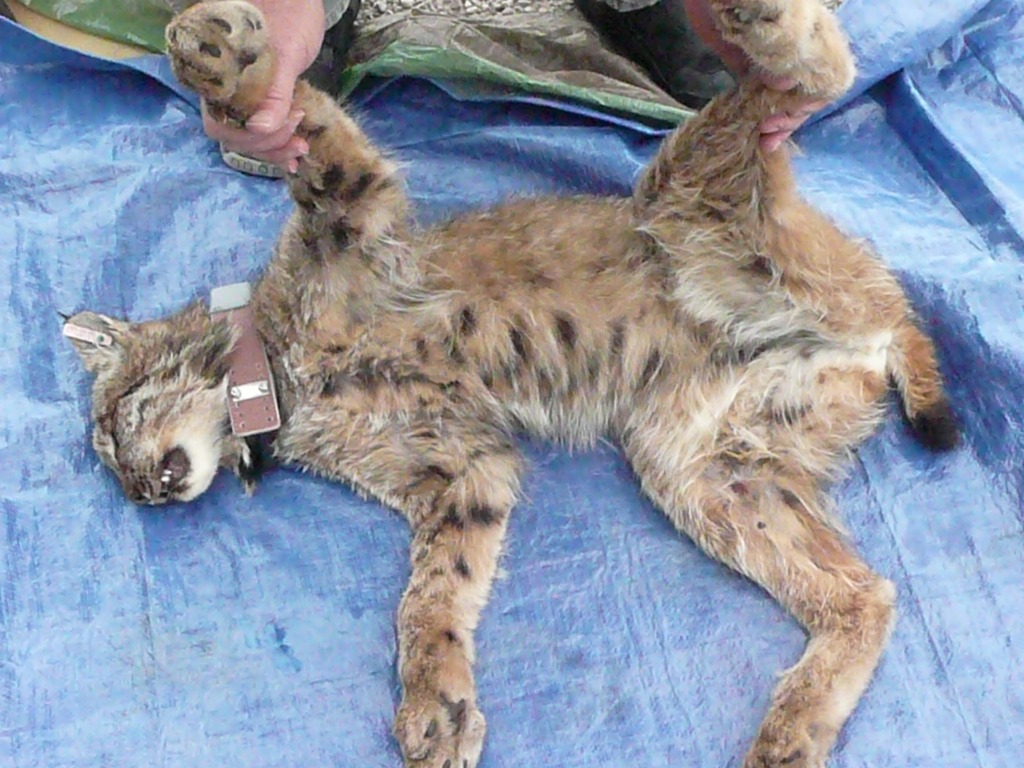This research focuses on the biological mechanisms driving population cycles of the Canada lynx (Lynx canadensis) with specific attention paid to habitat fragmentation and climate change hypotheses. Persistent and regular population cycles produced by specialist predators and their prey are a rarity in nature, but Canada lynx and snowshoe hare (Lepus americanus) display such a pervasive 10-year cycle. A recent breakdown in southern lynx cycles and falling population numbers in the US highlight threats to the integrity of boreal forest habitats, and may portend more widespread consequences of continued boreal forest fragmentation.
Our research objectives are to 1) regionally document the 10-year cycle break down at southern latitudes, 2) evaluate if barriers to lynx gene flow (hence dispersal) exist on a latitudinal gradient using genetic data, and 3) use a sample of radiocollared lynx to create a model of habitats that facilitate dispersal.
Understanding dispersal trends is essential for managing habitat fragmentation and protecting habitat connections in southern Alberta and British Columbia. Likewise, climate change might be rapidly dismantling population cycles in the boreal forest. The persistence of lynx near the Canada-US border may depend on either quality of dispersal connections with the core Canadian population or stemming the progression of climate change before it permanently alters the species’ dynamics. This study will help wildlife managers maintain an important predator in southern Canada. This research will also be used to inform forestry and other resource extraction industries, the trapping industry, and the collective knowledge of population ecology.




